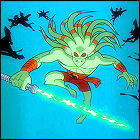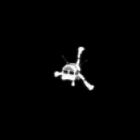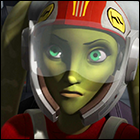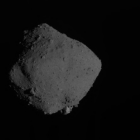Voyager: Future’s End, Part II
 UPN airs the 50th episode of Star Trek: Voyager. Ed Begley Jr. and Sarah Silverman guest star.
UPN airs the 50th episode of Star Trek: Voyager. Ed Begley Jr. and Sarah Silverman guest star.
More about Star Trek: Voyager in the LogBook and theLogBook.com Store
Star Trek: Voyager now streaming on Paramount Plus
 UPN airs the 50th episode of Star Trek: Voyager. Ed Begley Jr. and Sarah Silverman guest star.
UPN airs the 50th episode of Star Trek: Voyager. Ed Begley Jr. and Sarah Silverman guest star.
More about Star Trek: Voyager in the LogBook and theLogBook.com Store
Star Trek: Voyager now streaming on Paramount Plus
 The sixth episode of the sequel series Team Knight Rider airs in syndication, starring Brixton Karnes, Christine Steel, Duane Davis, and Nick Wechsler. Jesse Corti guest stars.
The sixth episode of the sequel series Team Knight Rider airs in syndication, starring Brixton Karnes, Christine Steel, Duane Davis, and Nick Wechsler. Jesse Corti guest stars.
More about Knight Rider in theLogBook.com Store
Team Knight Rider now streaming on Amazon Prime
![]() The 73rd episode of Gene Roddenberry’s Earth: Final Conflict, airs in syndication, starring Robert Leeshock, Jayne Heitmeyer, and Von Flores.
The 73rd episode of Gene Roddenberry’s Earth: Final Conflict, airs in syndication, starring Robert Leeshock, Jayne Heitmeyer, and Von Flores.
More about Earth: Final Conflict in the LogBook and theLogBook.com Store
Earth: Final Conflict now streaming on Amazon Prime
 The 108th episode of Joss Whedon’s supernatural series Buffy The Vampire Slayer, starring Sarah Michelle Gellar, airs on UPN. James Marsters, Anthony Stewart Head, and Alyson Hannigan also star.
The 108th episode of Joss Whedon’s supernatural series Buffy The Vampire Slayer, starring Sarah Michelle Gellar, airs on UPN. James Marsters, Anthony Stewart Head, and Alyson Hannigan also star.
This series is not yet chronicled in the LogBook. You could help change that.
 The sixth episode of the superhero series Birds Of Prey, based on characters from the DC Comics universe, airs on the WB.
The sixth episode of the superhero series Birds Of Prey, based on characters from the DC Comics universe, airs on the WB.
This series is not yet chronicled in the LogBook. You could help change that.
 Bridging the gap between Star Wars Episode II and Episode III, Cartoon Network premieres the fifth mini-episode of Genndy Tartakovsky’s The Clone Wars animated shorts.
Bridging the gap between Star Wars Episode II and Episode III, Cartoon Network premieres the fifth mini-episode of Genndy Tartakovsky’s The Clone Wars animated shorts.
 The 29th episode of Arrow, a modern-day reboot of DC Comics’ Green Arrow superhero starring Stephen Amell, airs on the CW. Caity Lotz (Mad Men, Legends Of Tomorrow) guest stars.
The 29th episode of Arrow, a modern-day reboot of DC Comics’ Green Arrow superhero starring Stephen Amell, airs on the CW. Caity Lotz (Mad Men, Legends Of Tomorrow) guest stars.
This series is not yet chronicled in the LogBook. You could help change that.
 Launched in 2004, the European Space Agency’s Rosetta space probe, orbiting Comet 67P/Churyumov-Gerasimenko in the outer solar system, releases the Philae robotic lander to descend to 67P’s surface. The lander’s harpoon anchoring system doesn’t work entirely as expected, and Philae bounces off the surface and goes spaceborne again for two hours before coming to rest on the comet once more. Though Philae is able to gather scientific data and the first-ever pictures from a comet’s surface, the nearby geography prevents its solar panels from keeping its batteries at a full charge; ESA ground controllers are only able to intermittently contact Philae.
Launched in 2004, the European Space Agency’s Rosetta space probe, orbiting Comet 67P/Churyumov-Gerasimenko in the outer solar system, releases the Philae robotic lander to descend to 67P’s surface. The lander’s harpoon anchoring system doesn’t work entirely as expected, and Philae bounces off the surface and goes spaceborne again for two hours before coming to rest on the comet once more. Though Philae is able to gather scientific data and the first-ever pictures from a comet’s surface, the nearby geography prevents its solar panels from keeping its batteries at a full charge; ESA ground controllers are only able to intermittently contact Philae.
 Cinewax Records releases, both digitally and on physical media, Kurt Stenzel’s score from the documentary film Jodorowsky’s Dune. Concerning an abortive 1970s attempt to commit Frank Herbert’s seminal SF novel to film, the music is done in an analog, 1970s style.
Cinewax Records releases, both digitally and on physical media, Kurt Stenzel’s score from the documentary film Jodorowsky’s Dune. Concerning an abortive 1970s attempt to commit Frank Herbert’s seminal SF novel to film, the music is done in an analog, 1970s style.
 Cable channel Disney XD airs the 65th episode of the series Star Wars: Rebels. Lars Mikkelsen, Clancy Brown, and Warwick Davis (Willow, Return Of The Jedi) guest star.
Cable channel Disney XD airs the 65th episode of the series Star Wars: Rebels. Lars Mikkelsen, Clancy Brown, and Warwick Davis (Willow, Return Of The Jedi) guest star.
More about Star Wars: Rebels in the LogBook
Star Wars: Rebels now streaming on Amazon Prime
 The CW airs the 96th episode of The Flash, a modern-day reboot of DC Comics’ superhero starring Grant Gustin.
The CW airs the 96th episode of The Flash, a modern-day reboot of DC Comics’ superhero starring Grant Gustin.
This series is not yet chronicled in the LogBook. You could help change that.
 Japan’s Hayabusa-2 uncrewed spacecraft, carrying samples of material from asteroid 162173 Ryugu, begins its long trip home after spending nearly a year and a half in Ryugu’s orbit, where it deposited autonomous robotic landers and fired a projectile into Ryugu’s surface to loosen material for capture and return to Earth. First launched in 2014, Hayabusa-2’s return trajectory to Earth is expected to bring the samples of asteroid material home to a safe landing in Australia in late 2020.
Japan’s Hayabusa-2 uncrewed spacecraft, carrying samples of material from asteroid 162173 Ryugu, begins its long trip home after spending nearly a year and a half in Ryugu’s orbit, where it deposited autonomous robotic landers and fired a projectile into Ryugu’s surface to loosen material for capture and return to Earth. First launched in 2014, Hayabusa-2’s return trajectory to Earth is expected to bring the samples of asteroid material home to a safe landing in Australia in late 2020.
 Streaming service Disney+ releases the the 11th episode of Jon Favreau’s The Mandalorian, starring Pedro Pascal. Katee Sackhoff (Battlestar Galactica) guest stars.
Streaming service Disney+ releases the the 11th episode of Jon Favreau’s The Mandalorian, starring Pedro Pascal. Katee Sackhoff (Battlestar Galactica) guest stars.